The desert is a harsh and inhospitable environment, dry and bare. Not much life is found in desert regions, and it’s no surprise! That being said, nature always finds a way, and there are plenty of plants that have adapted to the conditions of the desert, finding a way to grow and thrive within their environment.

And not all plants are cacti either. The desert has plenty of variety when it comes to plants, with many of them being unique and beautiful. So if you would like to discover a few of them…stick around! We’ve compiled a list of some of our favorite desert plants, along with some information about each to familiarize you. Let’s get right into it!
1. Brittlebush
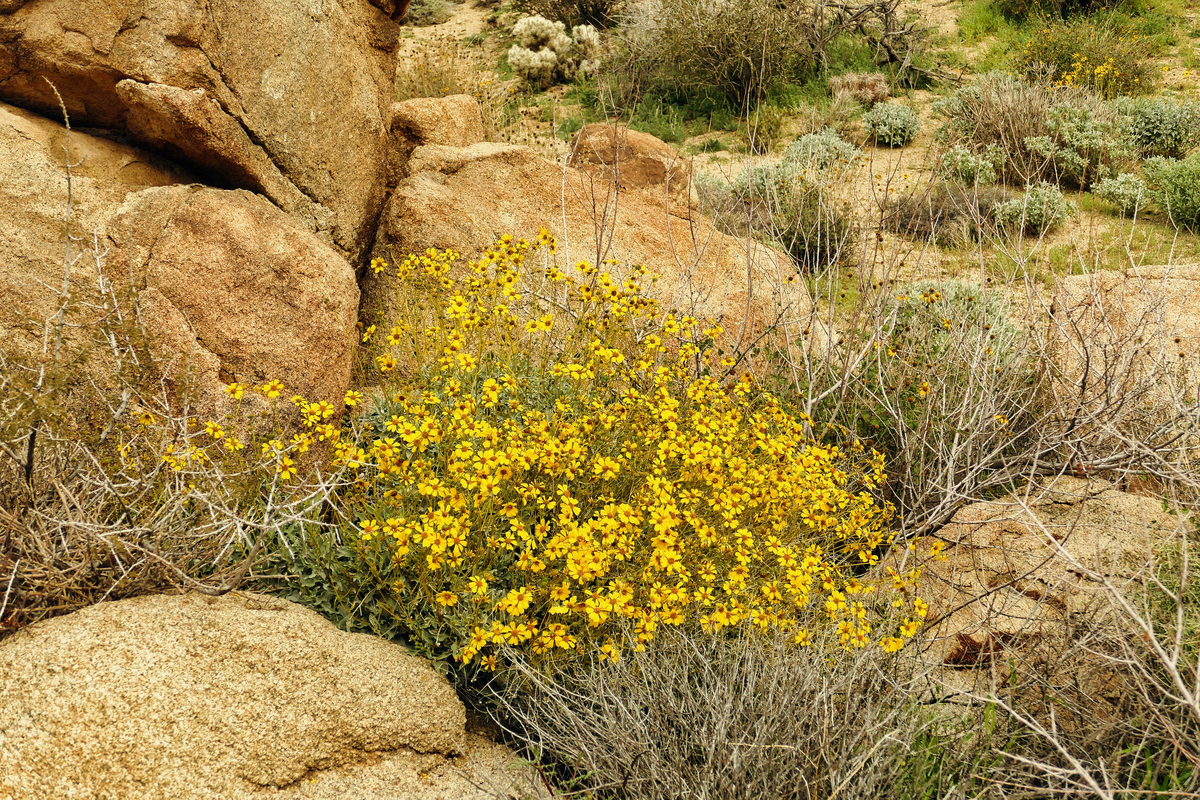
Brittlebush, officially known as Encelia farinosa, is a type of desert shrub plant common in the south of the United States and Mexico. Just as the name suggests, it is a brittle and fragile bush, with stems that break off really easily. However, it is very pretty, with vibrant yellow flowers that bloom amongst its foliage.
2. Creosote Bush
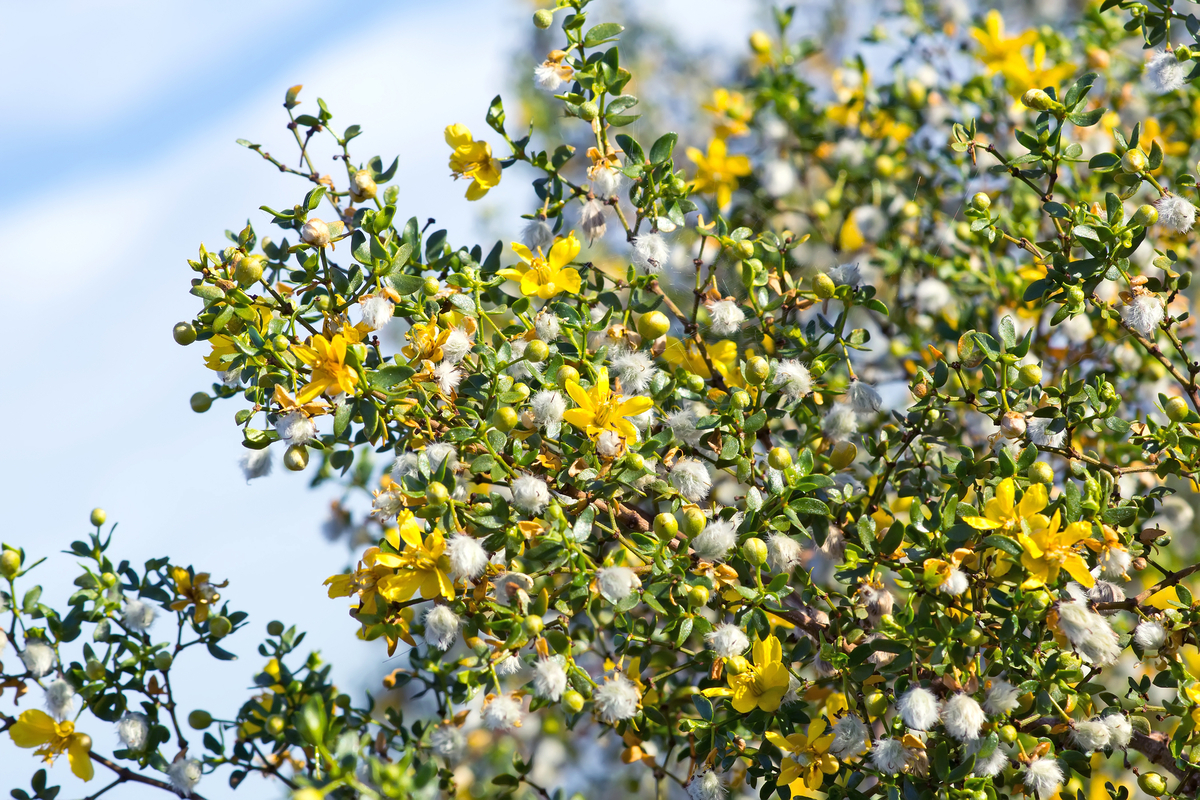
The Creosote Bush, officially known as the Larrea tridentata, is also sometimes commonly known as greasewood. It is a flowering desert plant, native to most arid deserts. It blooms with bright yellow flowers and is able to survive thanks to its deep root system. Oh, and the name comes from its fragrance, as it smells of creosote compounds distilled from coal tar.
3. Curve Leaf Yucca
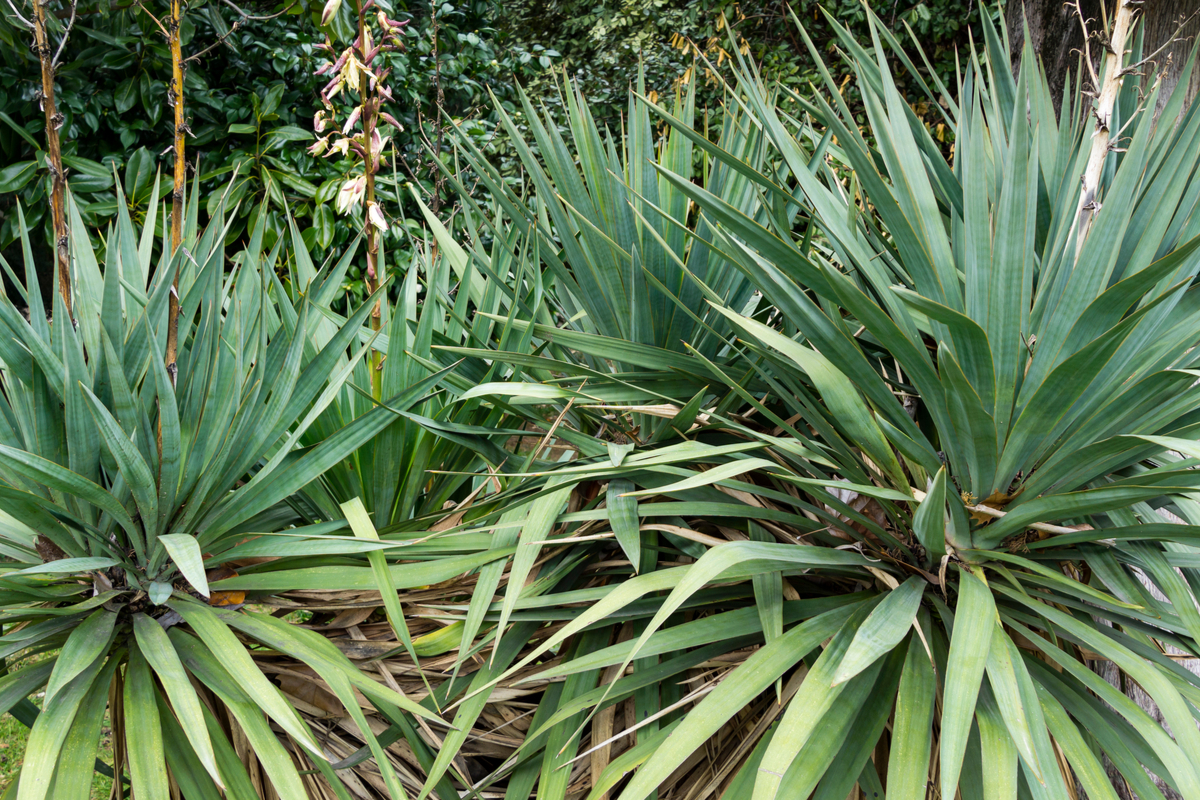
The Curve Leaf Yucca, officially known as the Yucca gloriosa, is a yucca desert plant that is commonly used for ornamental purposes within the south of the United States. It is known for its combination of low backward-curved leaves, and long and stiff upper leaves. It can grow to be around 5 feet high, and it blooms with clusters of small white flowers that have a strong fragrance.
4. Desert Lily
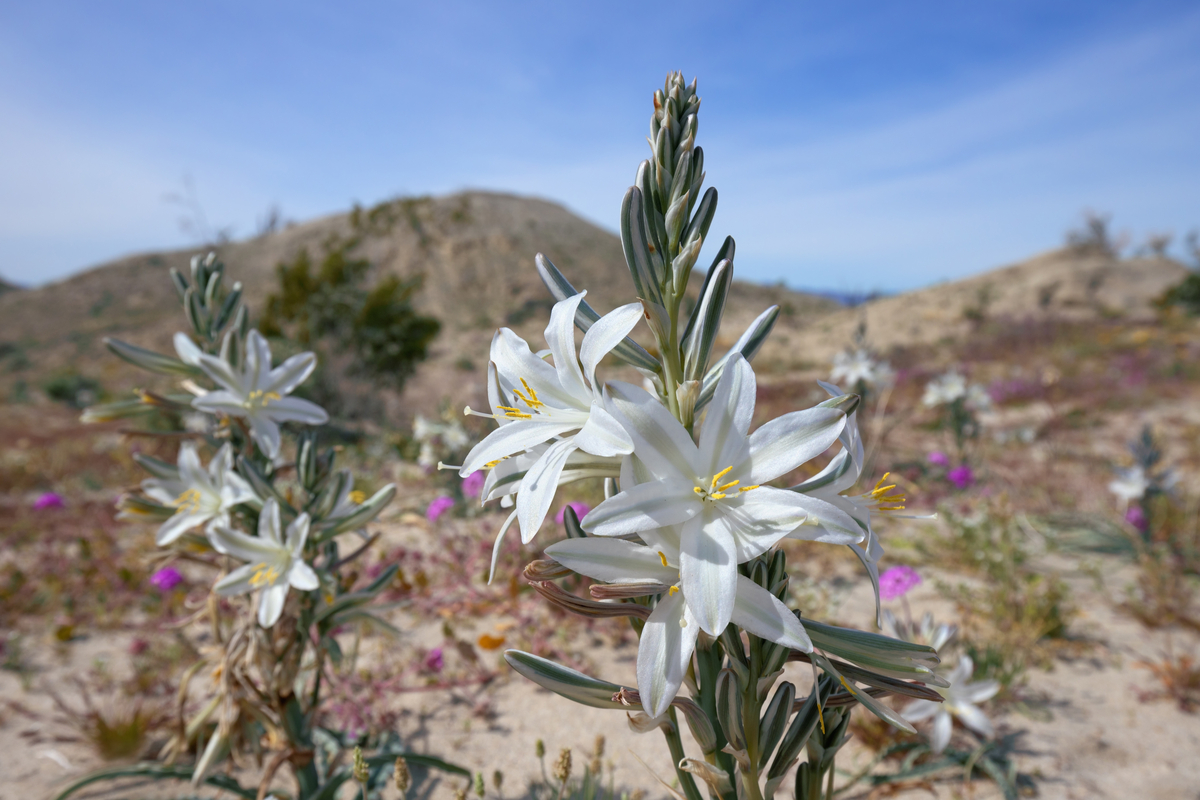
The Desert Lily, officially known as the Hesperocallis, is a common flower within Mexico and other desertic regions. It looks like a lily, hence the name, but it is actually better related to agave plants and is completely adapted to survival within the desert environment. It can also grow up to around 6 feet in height.
RELATED: 20+ Amazing Types Of Lilies (Lilium) For The Long Blooming Season
5. Desert Marigold
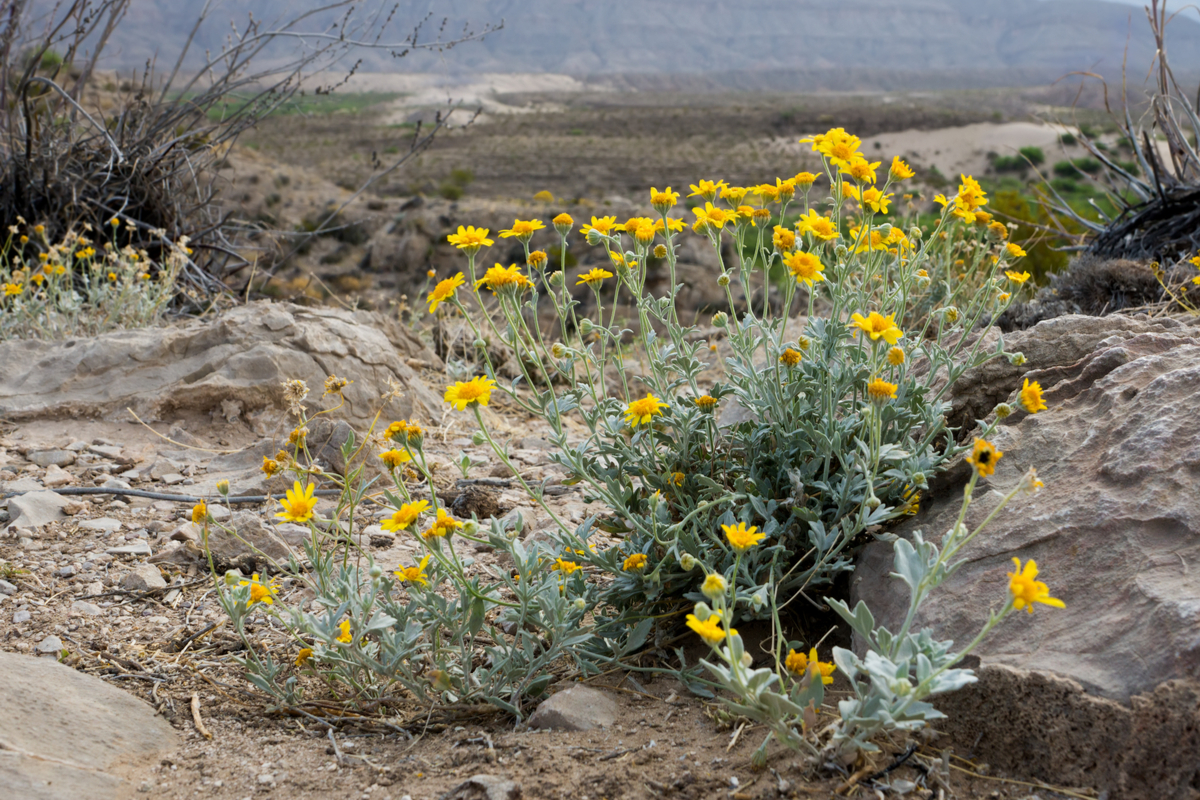
The Desert Marigold, officially known as the Baileya, is a perennial plant that can be found within desertic regions of Mexico, Utah, Arizona, and California. They are large and disc-shaped, blooming from spring to summer, in a bright vibrant yellow color. They are beautiful as garden flowers, and they are also very easy to grow.
6. Desert Palm Trees
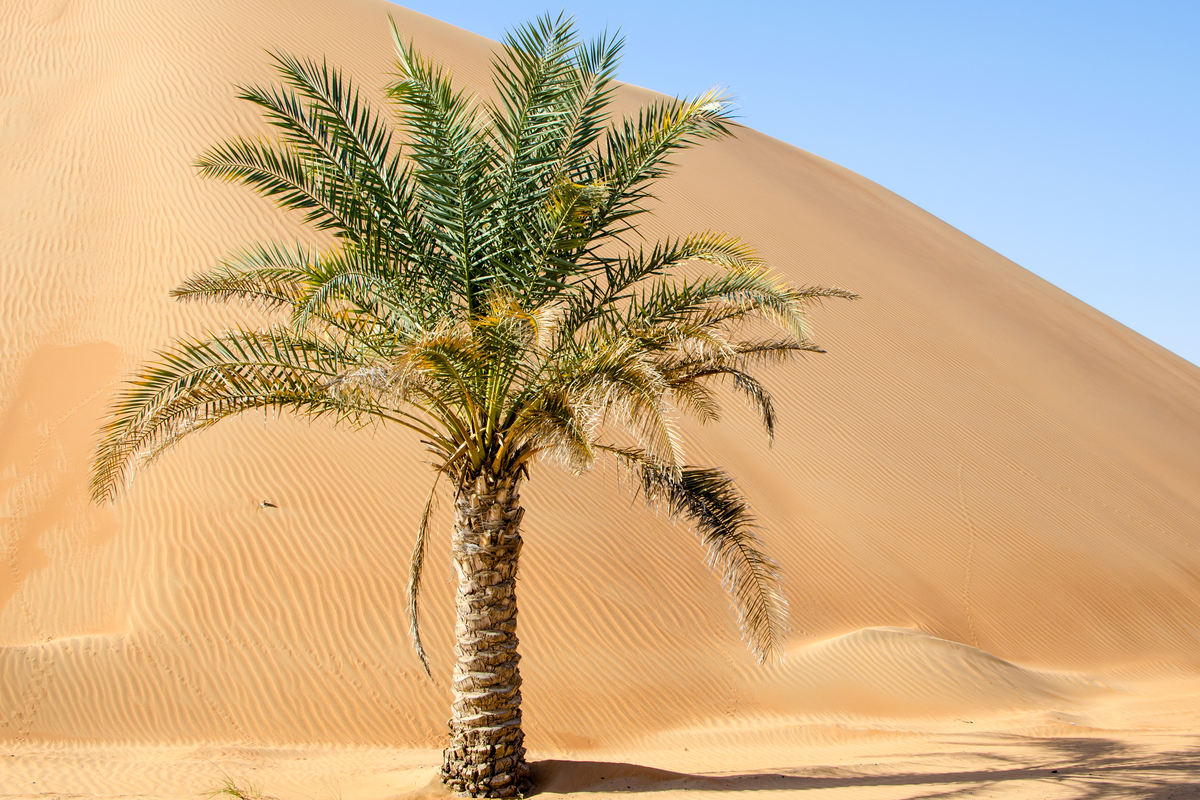
Desert Palm Trees are usually an image better associated with tropical beaches, but they are more than suited to the harsh barren environment of desertic regions. There are many different types and varieties, and they are very popular within cities and gardens in the South of the United States, and similar places.
7. Fox Tail Agave
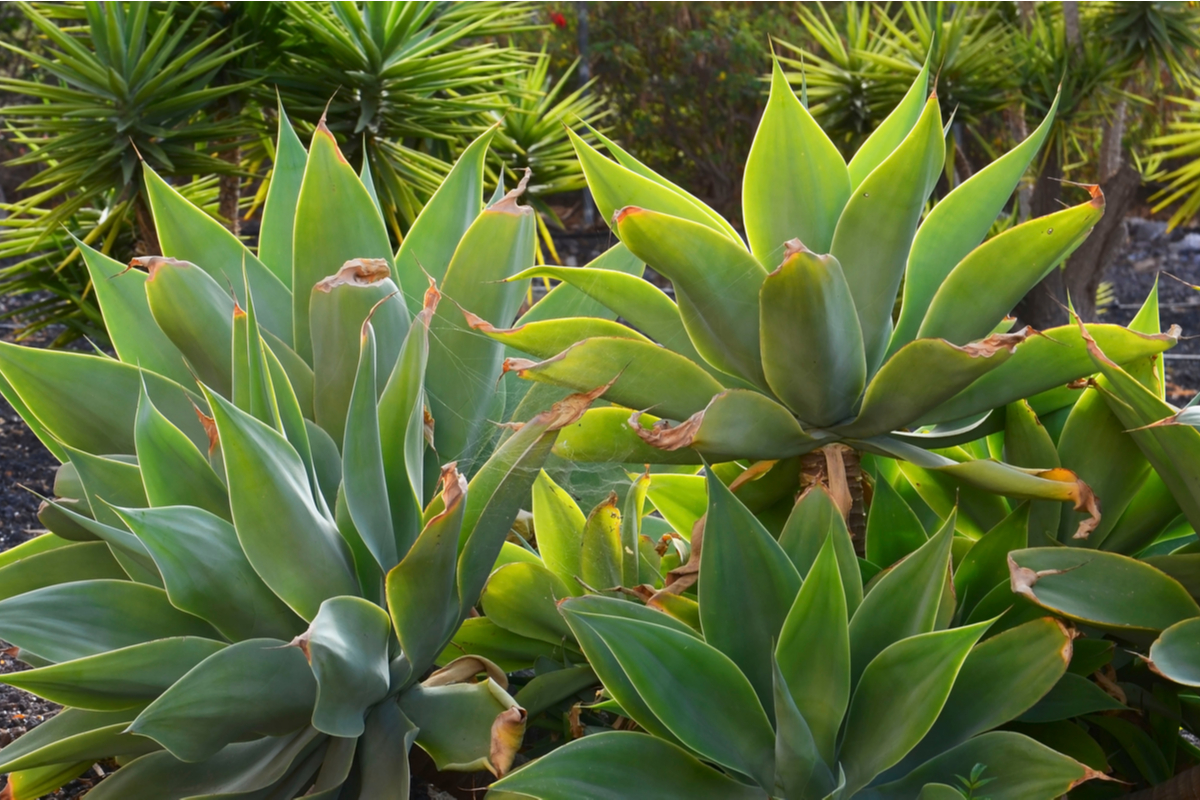
The Fox Tail Agave, officially known as the Agave attenuata, is one of the most popular agave plants for gardens within desert regions. It has thick blue-green leaves, arranged in a spiky formation, full of moisture to survive the harsh hot temperatures. It looks a lot like the Aloe plant, but they are not to be confused!
8. Ghost Plant

The Ghost Plant, officially known as the Graptopetalum paraguayense, is a type of desert succulent, sometimes also called the mother-of-pearl. It is native to Mexico and grows low on the ground. The leaves form a rosette, and it is a grayish almost white faded color. It is also very popular in houses, and in terrariums!
9. Golden Barrel Cactus

The Golden Barrel Cactus, officially known as the Echinocactus grusonii, is a cactus plant that looks like a large globe with spikes. It is green, with some yellow or white spines, and it also produces small yellow flowers, making it very visually striking. This cactus in particular looks great in desert gardens and can live up to around 30 years. Usually, they grow to be about 3 feet tall.
RELATED: 18 World Famous Yellow Cactus Varieties for Homes and Gardens
10. Jade Plant

The Jade Plant, officially known as the Crassula ovata, is most often known as the money tree. It is a very popular houseplant that is native to desert environments. It looks like a miniature tree, and is one of the most popular house-warming gifts, in order to bring good fortune and luck.
11. Jumping Cholla
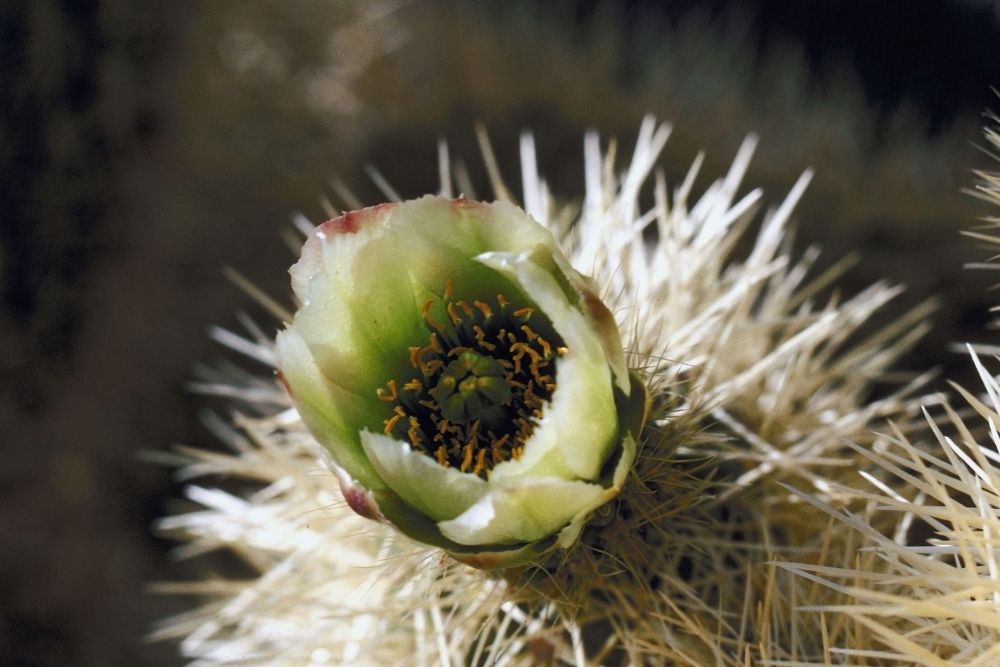
The Jumping Cholla, officially known as the Cylidropuntia fulgida, is a desert tree plant most often found in Arizona and California. It is essentially a mix between tree and cactus, with a thick trunk, branches at the top, and sharp barbs. It grows up to around 13 feet in height and blooms with pink and white flowers.
12. Mexican Feather Grass

Mexican Feather Grass, officially known as the Stipa tenuissima, is a type of desert grass that is often used in homes for ornamental purposes. It has very fine stems and blades, with fluffy ends. It is especially common in Mexico.
13. Mojave Aster

The Mojave Aster, officially known as the Xylorhiza tortifolia, is by far one of the most beautiful desert plants. It is native to the Mojave desert, and it looks like a large daisy, but in a striking lavender and white color, with a yellow center. It can often be found alongside desert trees and cacti, and always brightens up the landscape.
14. Organ Pipe Cactus
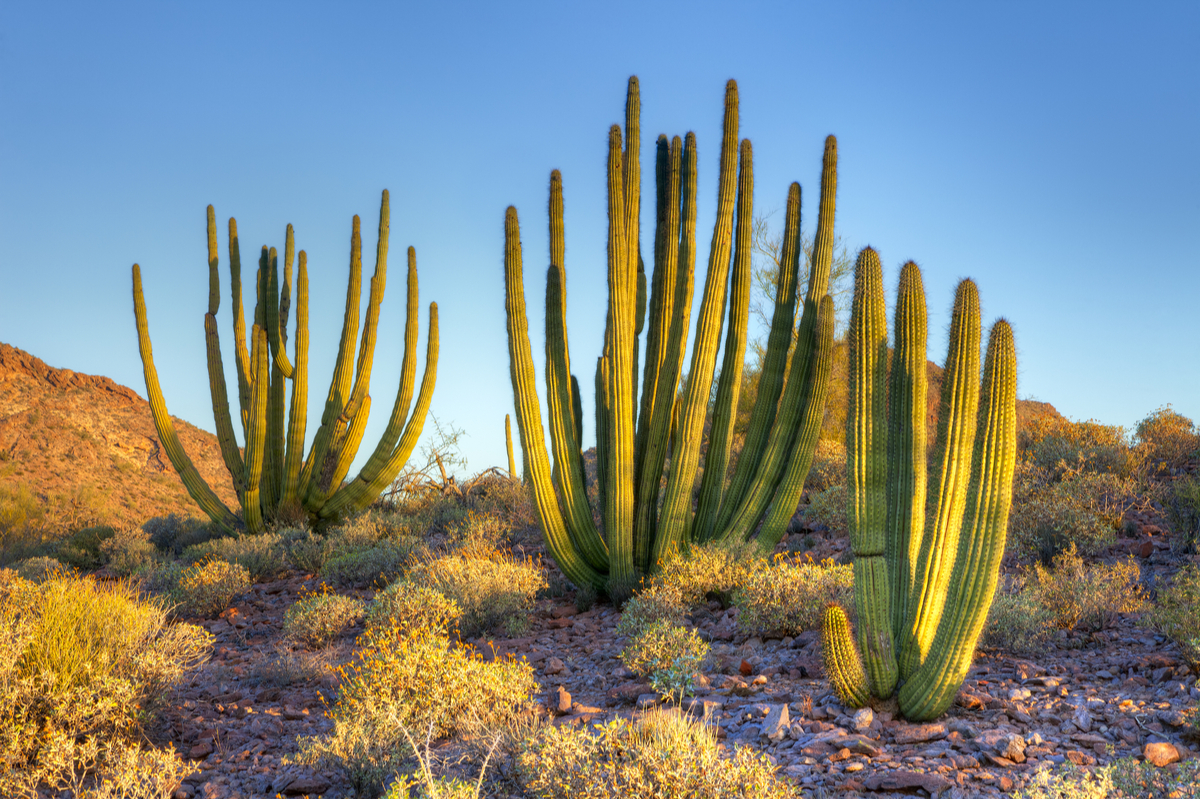
The Organ Pipe Cactus, officially known as the Stenocereus thurberi, is a cactus plant that pretty much looks like a pipe organ, much as the name suggests. It can grow to be up to around 16 feet tall, with thick-ribbed stems covered in sharp spikes. This plant, in particular, is extremely useful for desert people, as it produces a tasty fruit said to be better than watermelon!
15. Prickly Pear Cactus
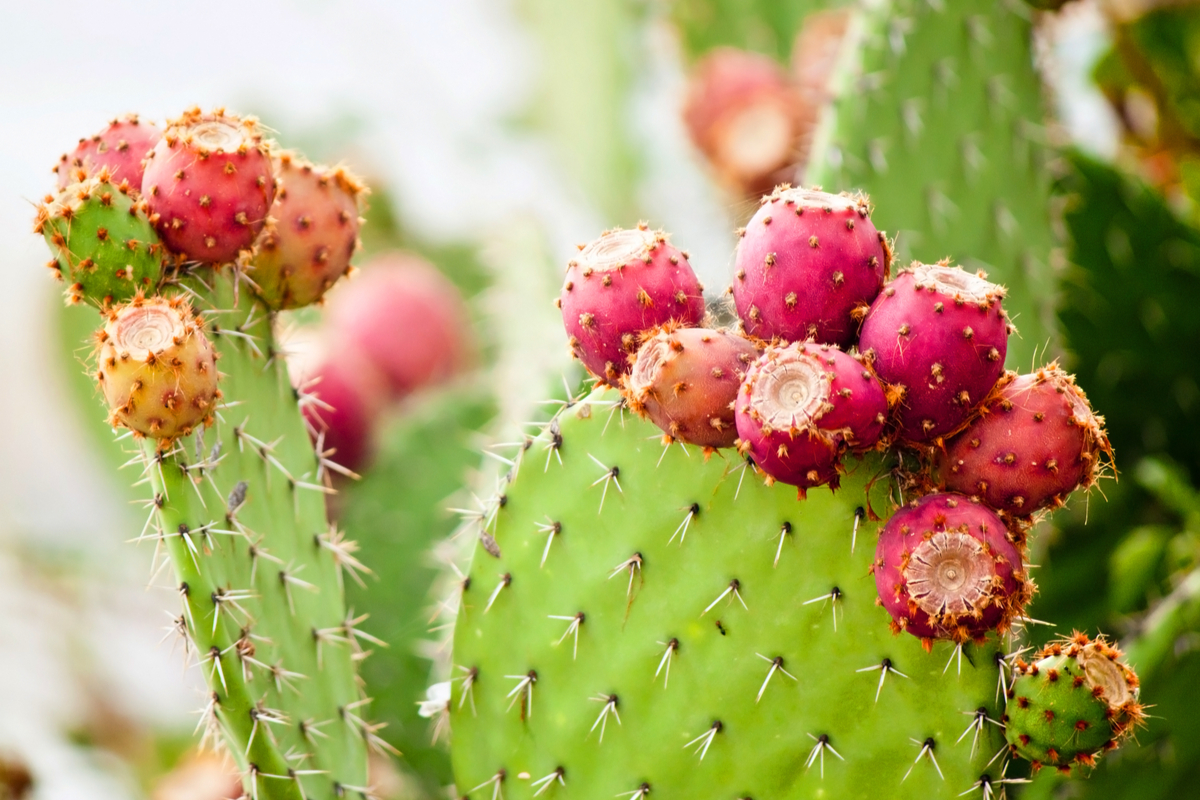
The Prickly Pear Cactus, officially known as the Opuntia, is one of the most iconic cactus plants within the desert. It has green pad-like succulent leaves, completely covered in spikes, able to store a great amount of moisture. It is incredibly common in the Southwestern United States and can grow to be up to 23 feet big. Oh, and it can also grow vibrant yellow, purple, and red flowers!
16. Red Pancake

The Red Pancake, officially known as the Kalanchoe thyrsiflora, is a small desert succulent. The name comes from its appearance, as it has round thick leaves, kinda shaped like a pancake, that has red on the edges. When in bloom, they become covered in yellow flowers.
17. Saguaro Cactus
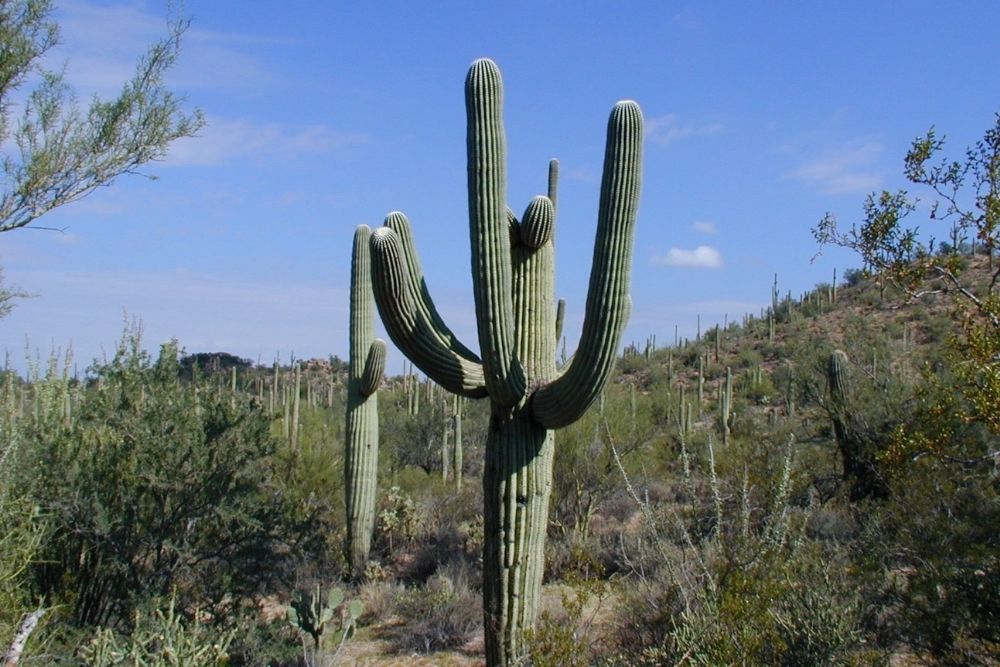
The Saguaro cactus, officially known as the Carnegiea gigantea, is a massive type of cactus that features branches that curve upwards, making it look like they are arms.
They are very common, especially within the south of the United States and the north of Mexico, which is why they are popular in cowboy movies. They can grow to be up to around 52 feet tall, although they do grow very slowly. They also bloom from April to June, with small white trumpet flowers.
18. The Joshua Tree
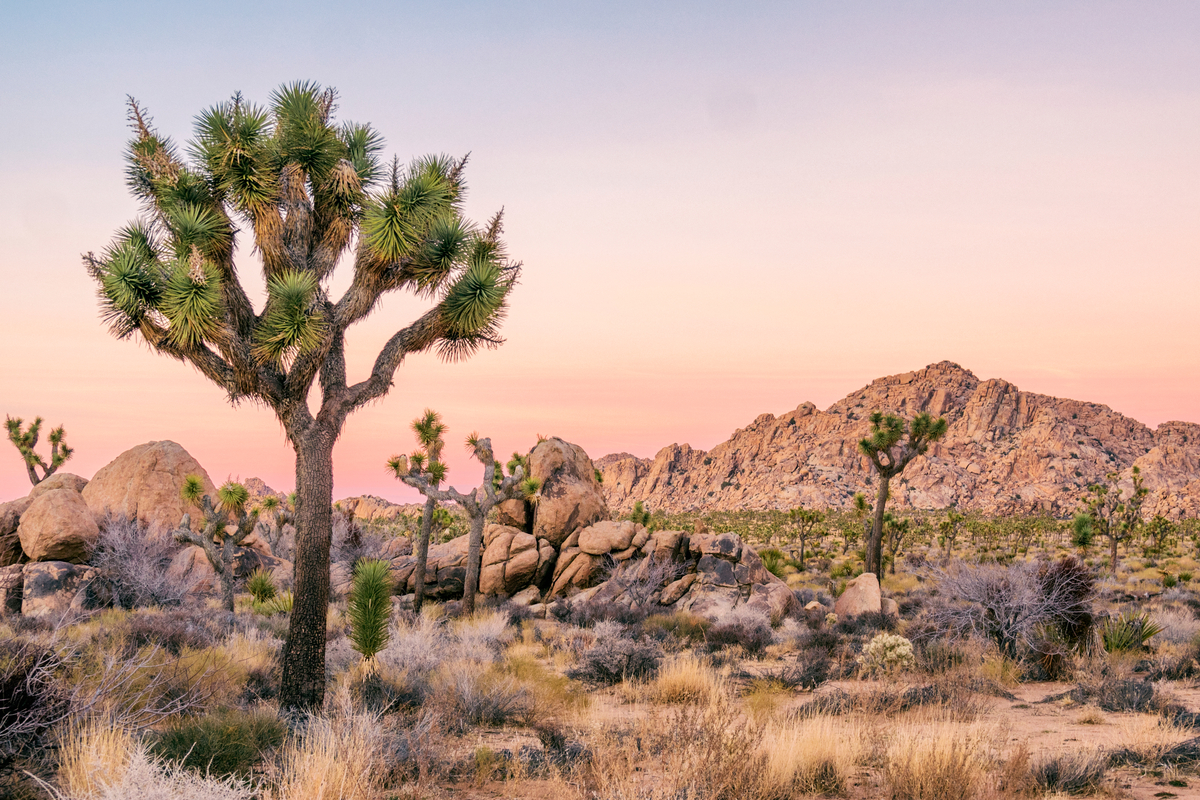
The Joshua Tree, officially known as the hYucca brevifolia, is a desert plant that grows specifically in the Mojave Desert, native to Arizona, Utah, California, and Nevada. It is sometimes also called the Yucca palm tree, and it can grow up to around 50 feet high (although it takes many years to do so).
It manages to survive thanks to the huge root system. Appearance-wise, you can identify it by the stumpy barren branches, with spiky green leaves that grow right at the end.
19. Tumbleweed
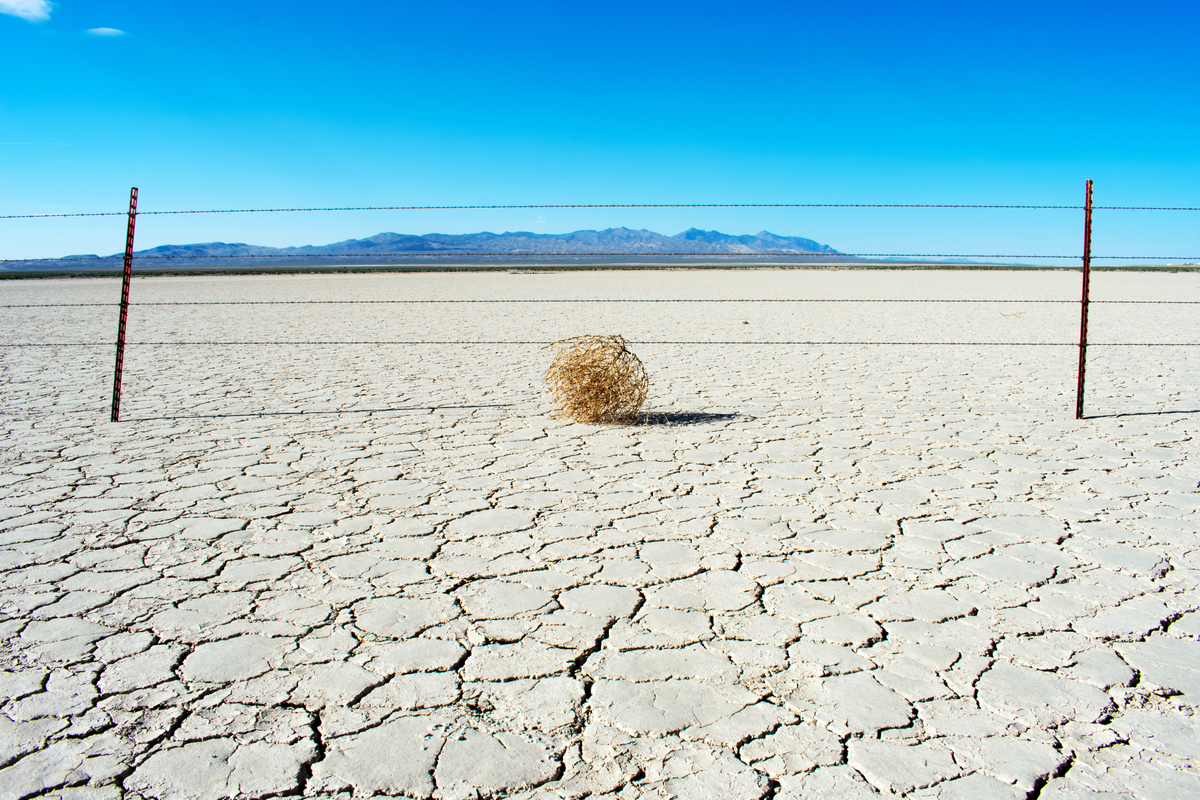
We couldn’t really talk about desert plants without mentioning the Tumbleweed, an iconic plant that is always shown rolling around in the wind during a tense scene in a cowboy movie. This plant is a true symbol of the Wild West, and it is essentially just a ball of dry weed that has become detached from its root system, left to be tossed around.
It is native to the Wild West, but you might be surprised to hear that it is also native to Russia! Oh, and becoming detached and being tossed around the desert actually has a use, as it helps disperse seeds. It’s why Tumbleweeds can be found everywhere in the desert, and why they are classed as invasive!
20. Yellow Bells
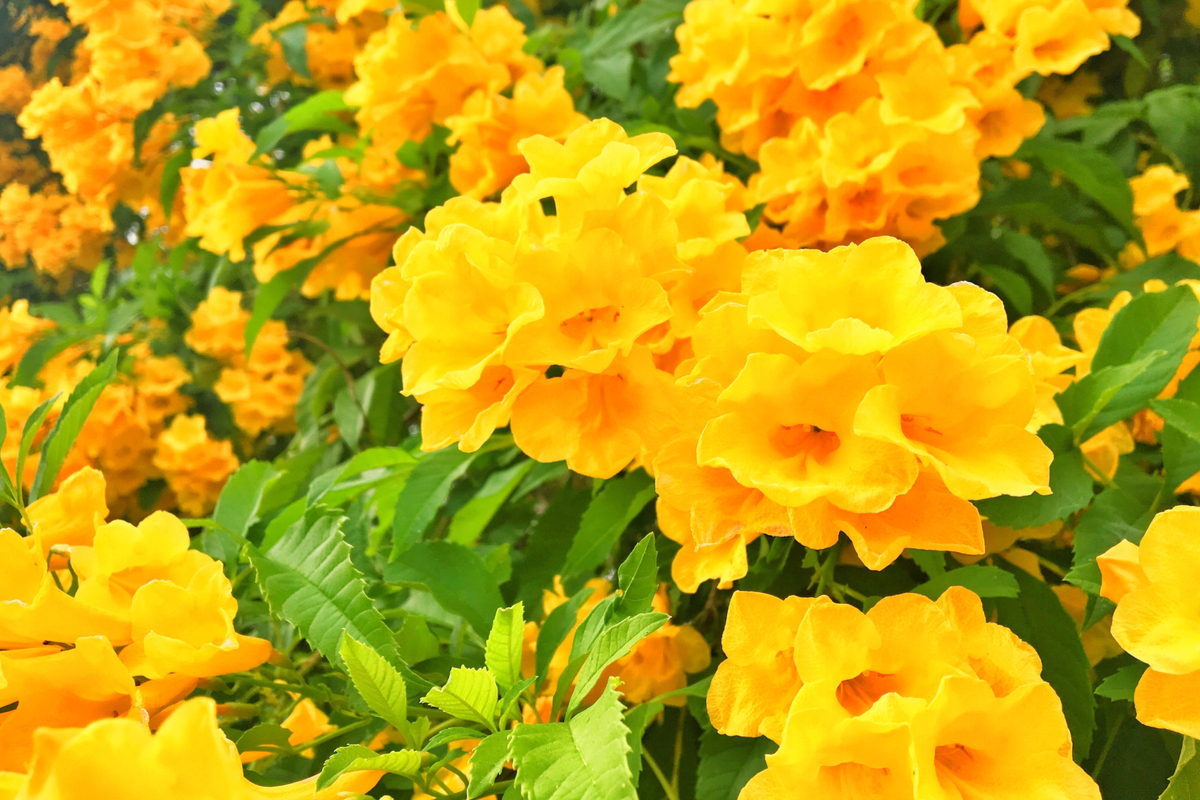
Yellow Bells, officially known as the Tecoma stans, are a flowering shrub from the desert that bloom in a bright and vibrant yellow. They are bell-shaped, much as the name suggests, and always grow in groups. They look especially good in gardens, as they add some color to the barren desert landscape.
RELATED: 21 Beautiful Types Of Yellow Plants (Including Photos)
21. Yellow Palo Verde
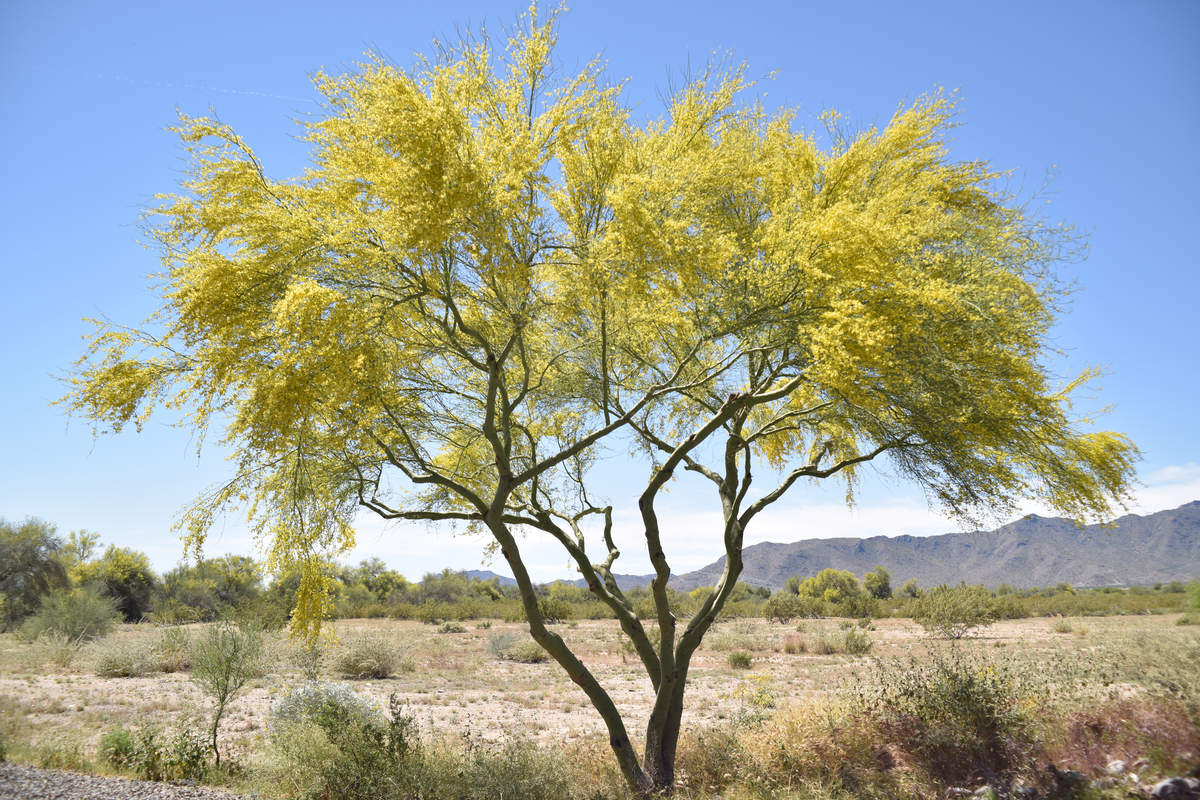
The Yellow Palo Verde, officially known as the Parkinsonia microphylla, is a big desert tree, native to the Sonoran Desert. The name translates into a yellow-green stick, and that pretty much describes its appearance, as it has yellow-green foliage. It can grow to be up to around 16 feet tall and is able to easily survive the harsh desert conditions.
Final Thoughts
These are just some of our favorite desert plants, as the list goes on and on, and there are plenty more for you to discover and learn about. As you can see, there is plenty of variety, and not every plant in the desert has to be a cactus, or spiky. There are some beautiful and vibrant flowers out there!







